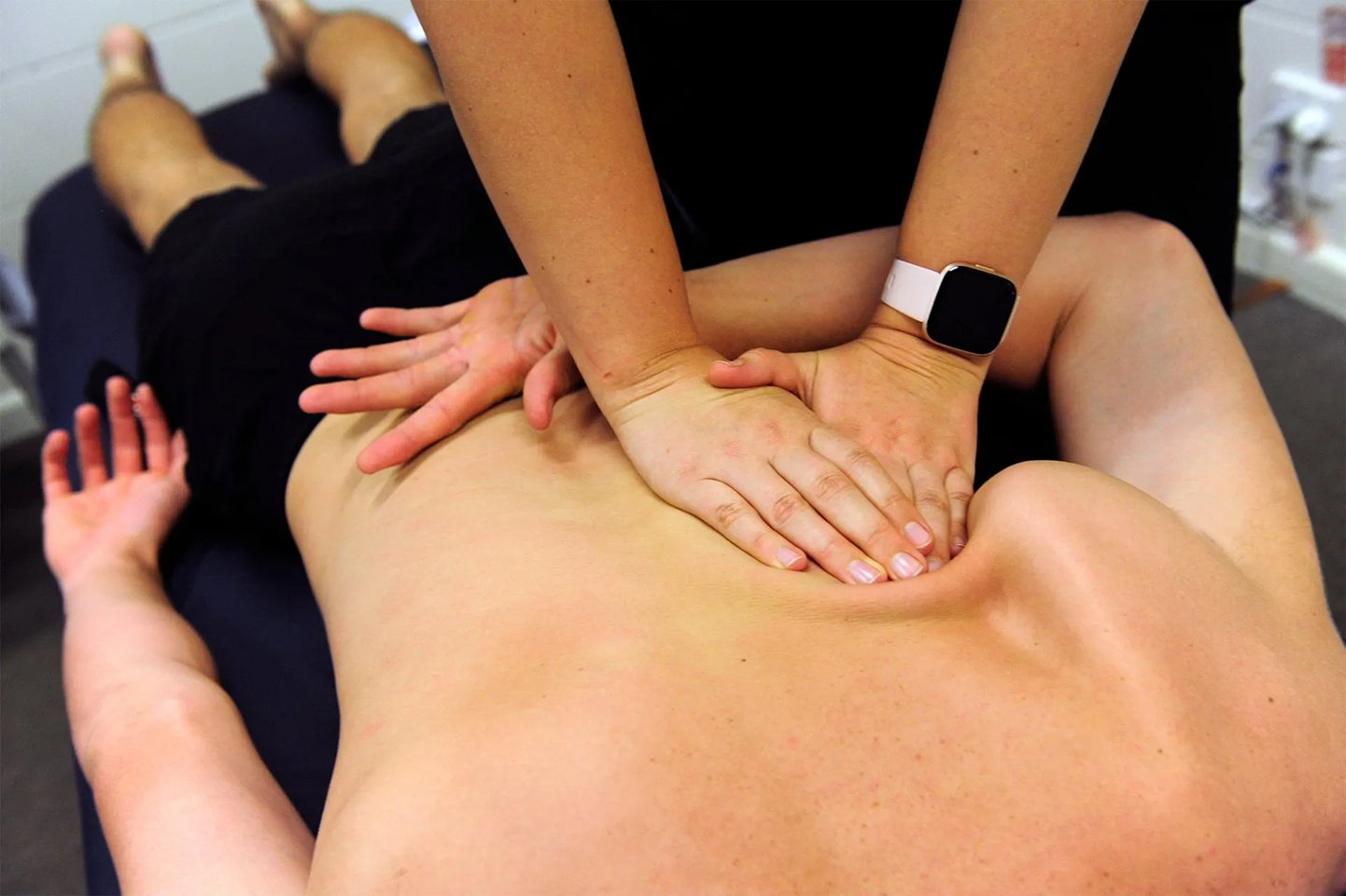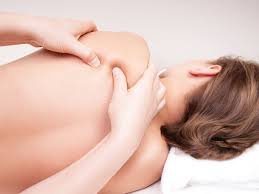
Neuromuscular Massage
Is Chronic Pain Or Tension Impacting Your Quality Of Life?
Are you experiencing ongoing pain and discomfort in your body?
Yet have traditional massage or pain relief techniques failed to treat your symptoms?
It may feel as though you are “chasing” your pain—once addressed in a specific area, it seems to move or radiate elsewhere. Whether you describe your pain as deep, dull, sharp, shooting, or burning, you may experience increasing discomfort throughout your body. And it’s possible that accumulating tension has resulted in secondary symptoms like headaches, a cough, tooth pain, tightness in the neck and lower back, or ringing in the ears, among others.
You’ve probably already sought out treatment for this issue but have yet to find meaningful, lasting relief. Perhaps conventional massage has not effectively targeted your pain. Or maybe you’ve felt dismissed by doctors and/or physical therapists who have only offered surface-level interventions.
Fortunately, neuromuscular massage and trigger point therapy are not just Band-Aid approaches. By getting to the root of your pain and following connective tissue patterns, these techniques can guide us in understanding where your pain is actually coming from.
As advanced neuromuscular massage therapists, our team at HeartSeed Massage & Wellness can aid you on the path to optimal wellness, healing, and living as pain-free as possible.
What Are Trigger Points And How Are They Related To Neuromuscular Pain?
According to the National Institutes of Health (NIH), “Trigger points are discrete, focal, hyperirritable spots located in the taut band of skeletal muscle. They produce pain locally and in a referred pattern and often accompany chronic musculoskeletal disorders.”¹ In other words, trigger points can be thought of as destinations on a map—we may feel pain in one location, but it’s likely that pain originated somewhere else in our bodies.
Primary Causes
Physical conditions and injuries can often result in neuromuscular pain, but there are other everyday activities that might contribute to discomfort. For instance, exercising (or a lack thereof), driving, walking on uneven surfaces, and having poor posture can aggravate trigger points. As can mental health issues, including unresolved trauma and accumulating emotional stress.
The fact of the matter is that anyone with a body is likely to encounter trigger point-related pain at some point in their lives. However, most people are not trained to recognize their pain as being related to trigger points and myofascial (connective) tissue. But that’s where neuromuscular massage comes in.
As massage therapists specially trained in neuromuscular release and trigger point therapy, we will work with you to get to the origins of your discomfort so that you can feel more comfortable and resume your daily activities without pain.
Our Approach To Neuromuscular Massage And Trigger Point Therapy
At HeartSeed Massage & Wellness, we generally believe that all injuries are treatable. Working together with our clients as a team, we can meaningfully release the pain from your body and restore a sense of homeostasis.
Unlike other common massage techniques like Swedish and Deep Tissue, neuromuscular massage is very targeted in its approach. By understanding more about your symptoms, we can map out the body’s trigger points and identify exactly where your pain is coming from.
What To Expect
The treatment process will begin with a very thorough intake that will help your massage therapist understand more about your unique neuromuscular map. In addition to learning about your current symptoms, we will gather pertinent information about your history, including any physical traumas or injuries you’ve sustained.
From there, your massage therapist will begin to play detective. We will work to identify which areas need attention and how to restore a sense of relaxation in the body. In doing so, we are likely to offer you self-care and relaxation skills that you can practice in between sessions to optimize your healing.
We will then aim treatment at relieving tension in tightened muscles and promoting blood flow so that you can feel more comfortable on a daily basis. By focusing on trigger points to direct pain out of the body, you can begin to feel relief in the span of just one massage session (though ongoing treatment is recommended, especially if your pain is chronic).
Our highly trained and passionate massage therapists are committed to helping clients relax and find lasting relief from chronic issues, including head, neck, back, and jaw pain. We’ve worked with a variety of adult clients—ranging from athletes to chronic illness patients to the elderly—in exploring, identifying, and resolving their pain and discomfort. We are confident that we can help you too.
Common Questions About Neuromuscular Massage
How can neuromuscular massage therapy target my symptoms?
Unlike many conventional massage techniques, neuromuscular therapy is particularly effective in locating the root of your pain. We perform a thorough intake at the outset of treatment that will help us identify specific trigger points and how certain activities may be exacerbating the issue.
Because this approach is both neuromuscular (focused on the body’s muscles) and myofascial (focused on the body’s connective tissues), it promotes release from many angles, which is extremely effective for targeting chronic pain in a lasting way.
Will I be sore after massage sessions?
Every body is unique, so it’s hard to say how yours will respond to treatment. And it’s important to know that, even with our recommendations in mind, it’s hard to control exactly how you will feel following your massage.
Regardless, we always encourage clients to remain well-hydrated both before and after sessions, as hydration will help the body’s muscles release more quickly. We might also suggest avoiding alcohol, caffeine, and foods that cause inflammation (including processed meats, grains, snack foods, and sugary drinks). Some clients find that going on a mild walk or taking a bath following treatment can help reduce soreness.
How long until my pain is fully resolved?
The answer to this question depends on a variety of factors, including frequency of sessions, post-treatment care at home, and any lifestyle changes that can help reinforce ongoing release. Healing is not linear and may take time, especially if you’ve struggled with symptoms for a while. As such, patience is key to this process.
Restore Comfort And Relaxation In Your Life
At HeartSeed Massage & Wellness, we are advanced neuromuscular therapists invested in our clients’ long-term healing and relief. To find out more about our services or book a session, please visit our contact page.






